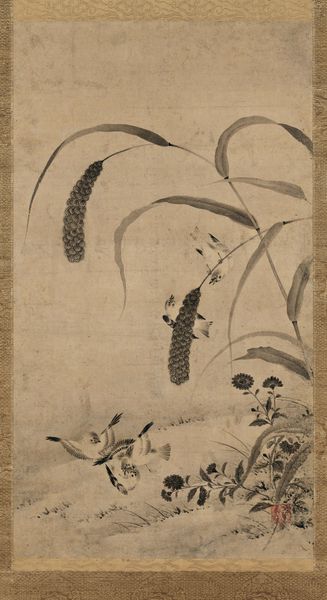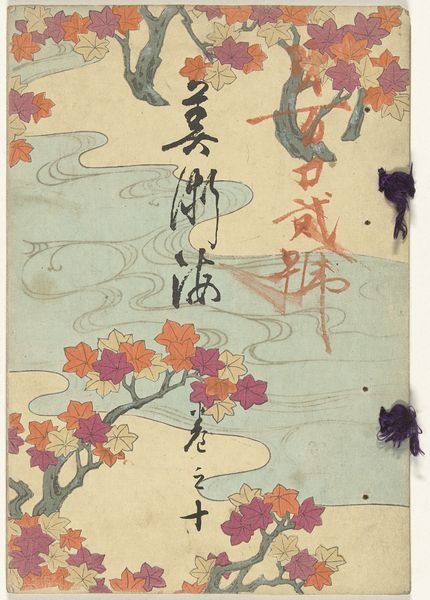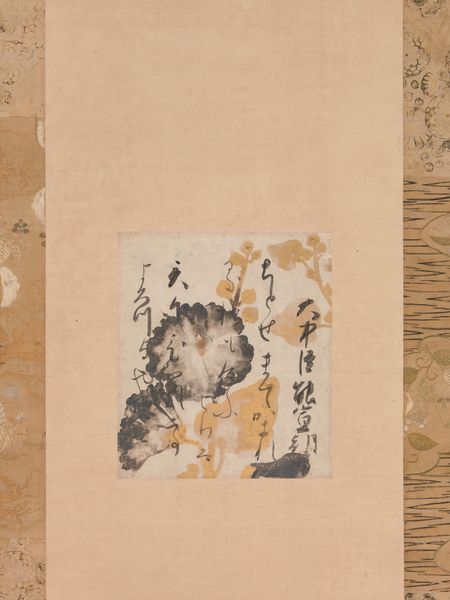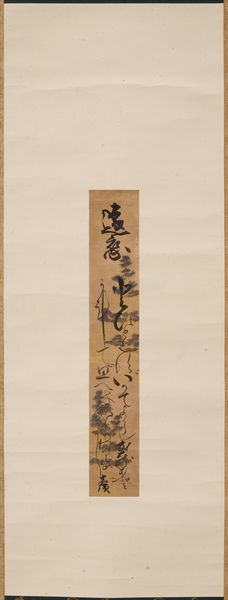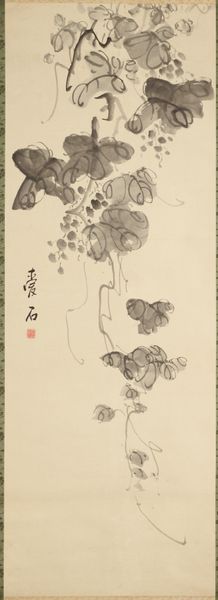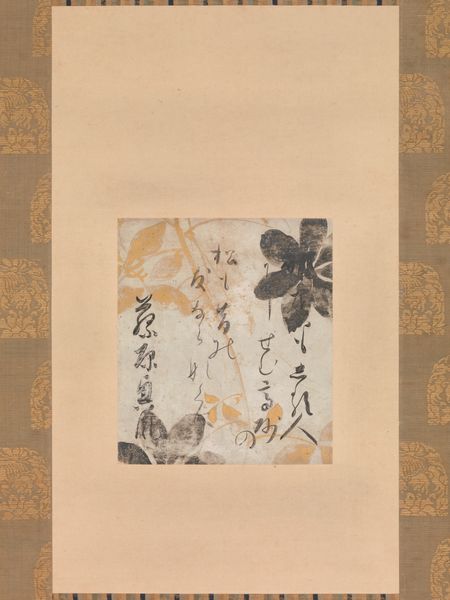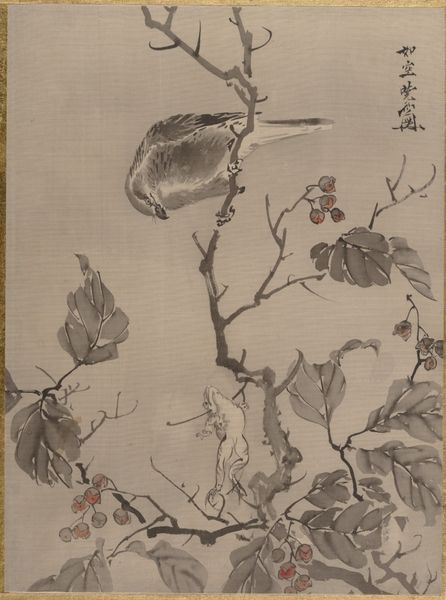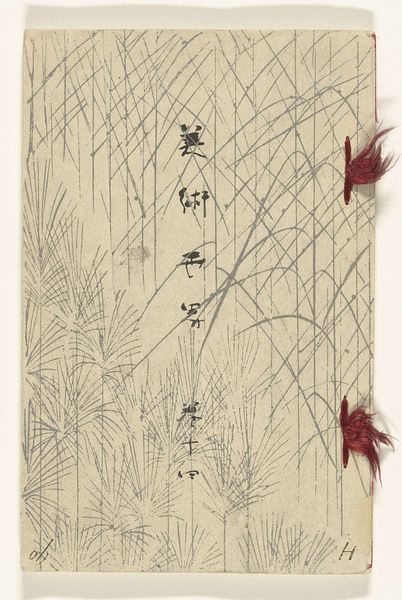
tempera, paper, watercolor, ink
#
tempera
#
asian-art
#
landscape
#
japan
#
paper
#
watercolor
#
ink
#
orientalism
#
line
#
watercolor
#
calligraphy
Dimensions: 14 1/8 × 2 3/4 in. (35.88 × 6.99 cm) (image)46 5/8 × 9 1/8 in. (118.43 × 23.18 cm) (mount, without roller)
Copyright: Public Domain
Curator: This is “Plum Blossom Tanzaku,” an ink, watercolor, and tempera on paper work created around the 19th century by Yamanaka Shinten’ō. It is part of the collection at the Minneapolis Institute of Art. What are your first impressions? Editor: Austere, yet remarkably delicate. The restrained palette of greys and creams imbues it with a sense of quietude. There is a visual rhythm established by the repetition and spacing of the plum blossoms. Curator: It's intriguing to consider this in relation to the artist's broader social environment. Works like these would often be commissioned by the elite or created within specific workshop settings. How does the socio-economic background influence our understanding? Editor: From a formal standpoint, the stark linearity coupled with the subtle gradations of ink wash establishes an interesting dialogue. The calligraphy acts as a counterpoint, providing textural variation and reinforcing the verticality of the composition. I think, too, it’s about line; each blossom, though unique, uses a simplified circular form with the stamen a bit bolder. Curator: I am interested in the physical production - what kind of paper was used? How did this influence the texture and absorbency of the ink and watercolor? Knowing the material constraints faced by the artist helps understand artistic choices. Editor: Agreed. The texture and tone of the paper support the minimalist aesthetic. However, focusing primarily on the artist's choices, the careful composition uses negative space to augment the ethereal nature of the blooms. It almost breathes. Curator: But even "negative space" is not truly empty. The cost and acquisition of fine papers played into who had access to make and acquire this art, changing consumption models, even. Editor: I concede the material conditions shape the piece, I'm captivated by how such unassuming materials combine into something so evocative. Ultimately, the artwork has a serene and almost ephemeral quality. Curator: For me, this art serves as a starting point to consider the socio-economic factors inherent in its production and distribution. Editor: Perhaps a valuable convergence for deeper appreciation of the artist's creation.
Comments
No comments
Be the first to comment and join the conversation on the ultimate creative platform.
